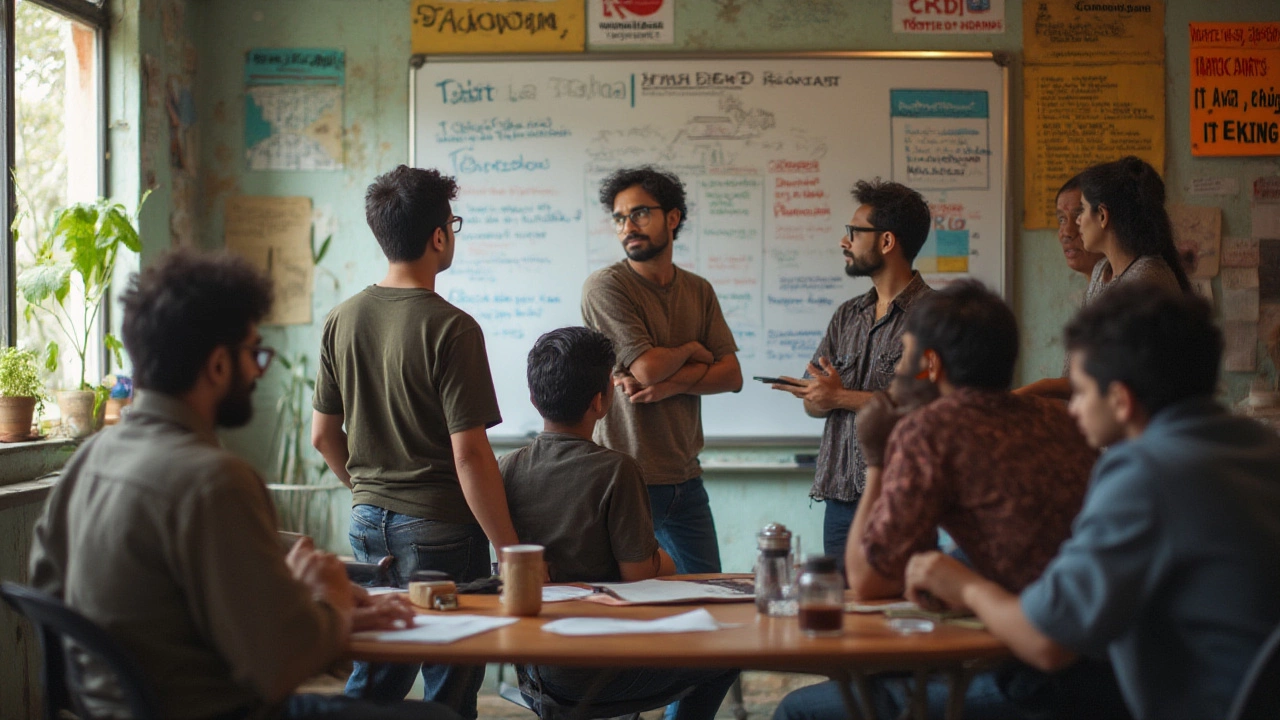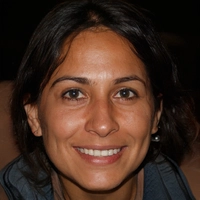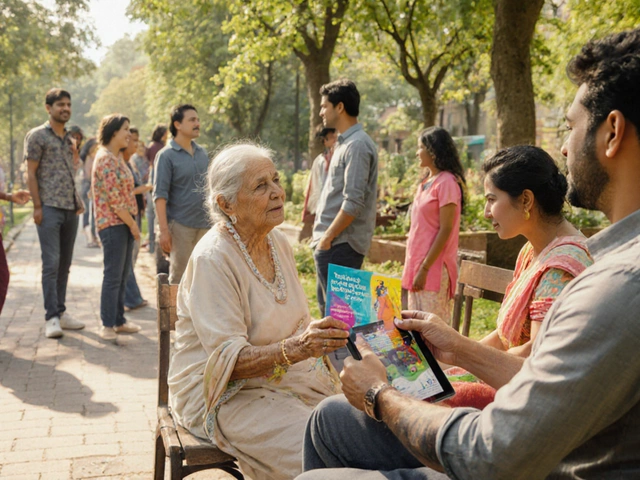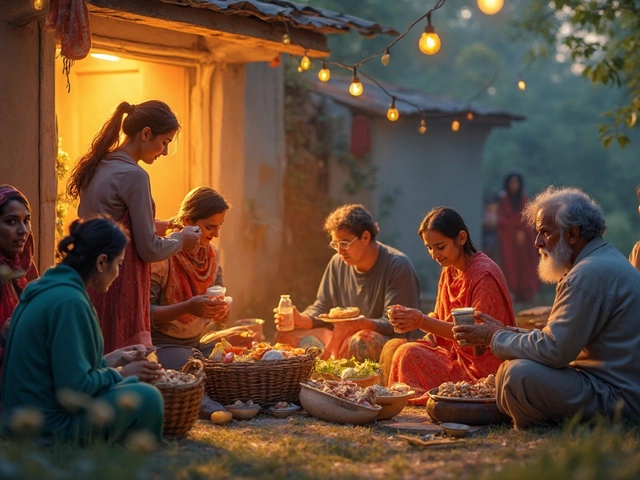Picture this: a small initiative run out of an old church basement in South Auckland quietly feeds 200 families a week with rescued food. Now, four years on, that grassroots effort is the backbone of a citywide food rescue network. What’s the secret sauce? Some outreach programs burn bright and fast, vanishing with their founder's energy, while others grow roots and reshape communities for decades. Unpacking how these programs go from scrappy beginnings to staying power offers a treasure trove of lessons—not just for social workers, but for anyone who cares about making a dent in the world.
Understanding the Heart of Outreach: Why People Engage
Here’s where it all kicks off: real outreach doesn’t start with a clipboard or an email blast. It starts with empathy—his mum needs help, her neighbour lost a job, someone’s feeling alone after moving halfway across the world. The best programs identify a real, sometimes overlooked need, and resist the urge to patch things up with quick fixes. People connect when they feel their struggles are genuinely seen. For example, a 2022 Massey University survey found that 73% of people who participated in a mental health outreach program said that simply having someone consistently check in made them feel more hopeful, even before receiving formal support. Emotional connection is often the first tiny step that leads to bigger change.
But it doesn’t stop at empathy. A successful outreach program dives into real talk about what’s actually missing. In Auckland, when the housing crisis was spiralling, one group asked people at local shelters what was making life hardest. The answer wasn’t just housing itself—it was lack of legal advice, somewhere safe for storage, and access to hot showers. By tackling what people really wanted, rather than assuming what was broken, that program didn’t just buffer homelessness, it chipped away at the everyday stressors that made escaping it much harder. There’s a pattern: programs thrive when they listen more than they lecture, constantly honing their approach as communities change.
There are practical ways to keep those lines wide open, too. Some programs have anonymous suggestion boxes or WhatsApp chat groups for feedback. The best stick around long enough to earn trust—helpers who flit in and out rarely gain valuable insight. There’s growing evidence that outreach teams made up of locals (“peer navigators”) get more people involved and inspire more honest feedback. That’s why you often see youth programs in New Zealand hiring young facilitators from within the suburbs they serve. Familiar faces break down suspicion and barriers, turning users into partners rather than passive recipients.
None of this empathy or deep listening is accidental. The most successful outreach efforts train their people—not just in first aid or paperwork, but in cultural sensitivity and trauma-informed language. For example, the NZ Police’s Youth Aid officers now undergo dedicated training in Te Ao Māori values before joining community teams, ensuring their engagement in Māori neighborhoods isn’t just box-ticking, but truly responsive. Those little signals add up and make people feel safe enough to open up, which keeps the program tightly woven into the local fabric. Miss out on this grounding and even a well-funded project can wind up ignored or quietly resented.
Building Strong Foundations: Strategy, Partnerships, and People
Crafting the perfect outreach operation is a bit like constructing a footbridge in the bush: you need sturdy ground, smart planning, and hands ready to leap in when the weather suddenly changes. Successful programs invest real time mapping out where the biggest impact is needed, gathering allies, and then setting up structures that don’t topple at the first strong wind.
The first pillar is clarity of purpose. Everything starts with a sharp, realistic goal—something you can measure, not abstract mission statements. For example, one of Auckland’s leading elderly care outreach groups didn’t just aim to “reduce isolation.” Instead, they said, “Every senior in our postcode will get eight home visits per year and a Christmas hamper.” That’s a goal you can check off. When stuff is this clear, everyone pulling together—organisers, volunteers, funders, beneficiaries—knows exactly when something has been achieved or where things are slipping.
None of this happens in a vacuum. Outreach works best when it links arms with other organisations. Think food banks partnering with cultural groups for translation, or women’s refuges connecting with schools for early-warning support. Partnerships let the work leapfrog over walls—giving access to resources no single group truly has alone. A live example: in Southland, a collaboration of rural schools, iwi, and healthcare providers reduced child food insecurity by consolidating their separate lunch programs, letting them bargain bulk grocery prices and share delivery vans. According to a 2023 report from the NZ Ministry of Social Development, this joint effort brought lunch access to 45% more children than siloed, smaller initiatives could.
Good programs aren’t just stitched together—it takes the right set of hands behind the scenes. Leadership matters. Teams work best with a mix: visionary energy to dream big, logistical brains to make each dollar go further, and—often overlooked—safeguarding officers to ensure everyone’s protected. In some circles, this looks like a project coordinator, an accountant, and a welfare officer. In others, it’s three best mates who know their street better than anyone and divvy up jobs without spreadsheets. The form doesn’t matter; the function does. You need people to spot burnout, gaps in delivery, or even simmering tensions between volunteers before they turn toxic. Programs with regular, low-pressure check-ins (sometimes as simple as shared pizza night, sometimes formal supervisions) see lower turnover and steadier progress.
Here’s a tip from the school of hard knocks: successful teams encourage healthy feedback internally too. If a plan isn’t working, they scrap it with no drama. If volunteers feel overwhelmed, they get help. The trick is to avoid ego-driven leadership, which derails honest dialogue. That might sound obvious, but even with the best intentions, egos creep in. Groups that set clear routines for open chats and reflective debriefs weather bumps far better than those that hope problems will just disappear.
And don’t ignore the nuts and bolts: legal structures, safety procedures, record-keeping. It’s unglamorous but essential. A program that can’t show where its funding goes or doesn’t have child safety checks in place is a few bad headlines away from collapse, no matter how inspiring its story. Here’s a quick table showing the difference a solid foundation can make:
| Element | With Strong Foundations | Without Strong Foundations |
|---|---|---|
| Staff Retention | Stable (avg. 2 years+) | High turnover (6-12 months) |
| Volunteer Growth | Rises yearly (median 20%) | Flat or shrinking (-5% year-on-year) |
| Funding Security | 3+ year grants; regular donors | Short-term grants; emergency appeals |
| Community Trust | Consistent high engagement | Low initial uptake; patchy loyalty |

Measuring Real Impact: Data, Results, and Community Feedback
So, a program’s humming along. People show up. Food gets delivered. Courses run. But is it working? This is where so many efforts stumble—struggling to prove their value, especially when funding is at stake or criticism flies. Yet tracking success can be simple and surprisingly empowering for teams and communities alike.
Start with the basics: what can you actually count? This could be meals served, homes visited, or people trained. For example, an Auckland literacy outreach tracked not only the number of children who attended weekend reading sessions but also how many moved up a reading level within six months. The numbers didn’t just help with annual reports—they let the team tweak what wasn’t landing. Suddenly, they saw that kids who attended with an older sibling stuck with the program longer, so they rolled out family invitations. The impact grew, all traced back to those first, simple stats.
Yet numbers alone don’t tell the whole story. Successful programs blend hard data with lived experiences. Community feedback—especially collected via short, friendly conversations, social media polls, or anonymous text messages—fills gaps. For instance, Wellington’s Free Store discovered through feedback that shoppers felt ashamed about “taking handouts,” so they added a ‘pay what you can’ jar. It didn’t raise much money, but shifted the vibe; more people used the service with heads held high, and the sense of dignity meant participants kept coming back.
Programs can also lean into digital tools. There’s free survey software, SMS poll systems, and online mapping platforms that let teams visualize where needs are clustering or which parts of town are missing out. In 2024, a Christchurch after-school group used an interactive map to show their walk-home safety volunteers where bullying hotspots were. Shifts were adjusted, and bullying reports in those areas dropped by 22% within a school term. It’s proof that practical, actionable data nudges make a real difference—sometimes faster than grand, expensive rollouts.
Regular reviews are crucial. The most effective outreach efforts set aside time—monthly, quarterly, or after a key event—to ask what’s working and what’s not. Some teams use peer review panels, others invite in a neutral “critical friend” to ask tough questions. The rule? No sugar-coating. Everyone, including the people you serve, gets a voice. This isn’t about shaming failures, but learning fast and iterating even faster. Outreach is messy and unpredictable—programs that treat every challenge like a learning moment stick around the longest.
Don’t forget to tell your story, either. Funders and supporters latch onto programs that can not just present charts, but share personal stories—’Jane, a solo mum, learned to budget and now volunteers herself’ is more powerful than percentages alone. And in today’s social media age, those snippets give donors and community members real-time proof that their trust is well-placed.
Staying Resilient: Adaptability, Learning, and the Human Touch
If there’s one thing outreach veterans whisper to each other behind the sausage sizzle table, it’s this: what works now won’t always work next year. Needs shift. The pandemic showed everyone how a crisis can upend priorities overnight—and how the nimblest programs managed not just to survive, but to grow when rules changed and resources dried up.
First, resilience starts with adaptability. The best outreach groups don’t lock into one way of working. They keep emergency plans up their sleeves—moving an in-person homework club to phone mentoring during lockdown, or finding creative ways to deliver food parcels when travel is restricted. And it’s not only the approach that changes; great programs regularly update their training. When Auckland’s migrant communities reported a spike in online scams in 2023, one local support hub quickly added cyber safety information to its weekly classes. That swap took days, not months—faster than any government-run scheme rolled out citywide.
Then there’s the discipline of learning out loud. Lessons—especially the rough ones—get shared, not swept under the rug. Resilient teams have a regular ritual to swap insights, botched efforts, and surprise wins. Sometimes that means WhatsApp group check-ins after a rough shift. Sometimes it’s brief interviews for internal newsletters. Every time, the point is to keep learning collective, not siloed with the team leader. Resilience grows when everyone feels safe owning mistakes, suggesting better ways, and celebrating the small wins each week.
Burnout is a reality, too. Community work can grind people down, especially when faced with trauma, loss, or seemingly intractable problems. Programs that last develop solid ways to care for their own—the odd staff retreat, rotating leadership, or just a culture where people take their birthday off. The most resilient ones aren’t martyrs; they build in fun and friendship, marking the victories and easing the defeats. That’s the human heartbeat behind statistics and strategy.
Story after story shows that successful outreach programs break the stereotype of charity as “helping the helpless.” The best build connections so strong, community members soon step into leadership. Old recipients host new group meetings, former clients train the next batch of volunteers. It’s a cycle—start with a lone pantry, end up with a network run by locals, for locals. That’s sustained, meaningful change. Any program aiming for true impact should look for those signs: are more people staying involved, building skills, passing on what they’ve learned? If yes, the groundwork is solid, whatever storms hit next.
Aotearoa is full of these quiet success stories: from Māori-run financial outreach helping hundreds break free of loan sharks, to city kids learning to cook together, growing friendships well beyond the projects. The common thread? Every lasting outreach program is equal parts smart planning, ruthless honesty, and warm-hearted human touch—always ready to learn, always with its feet on the ground and ears open to new needs. That’s outreach program success, Kiwi-style—and it’s open to anyone ready to care, listen, plan, and adapt.







